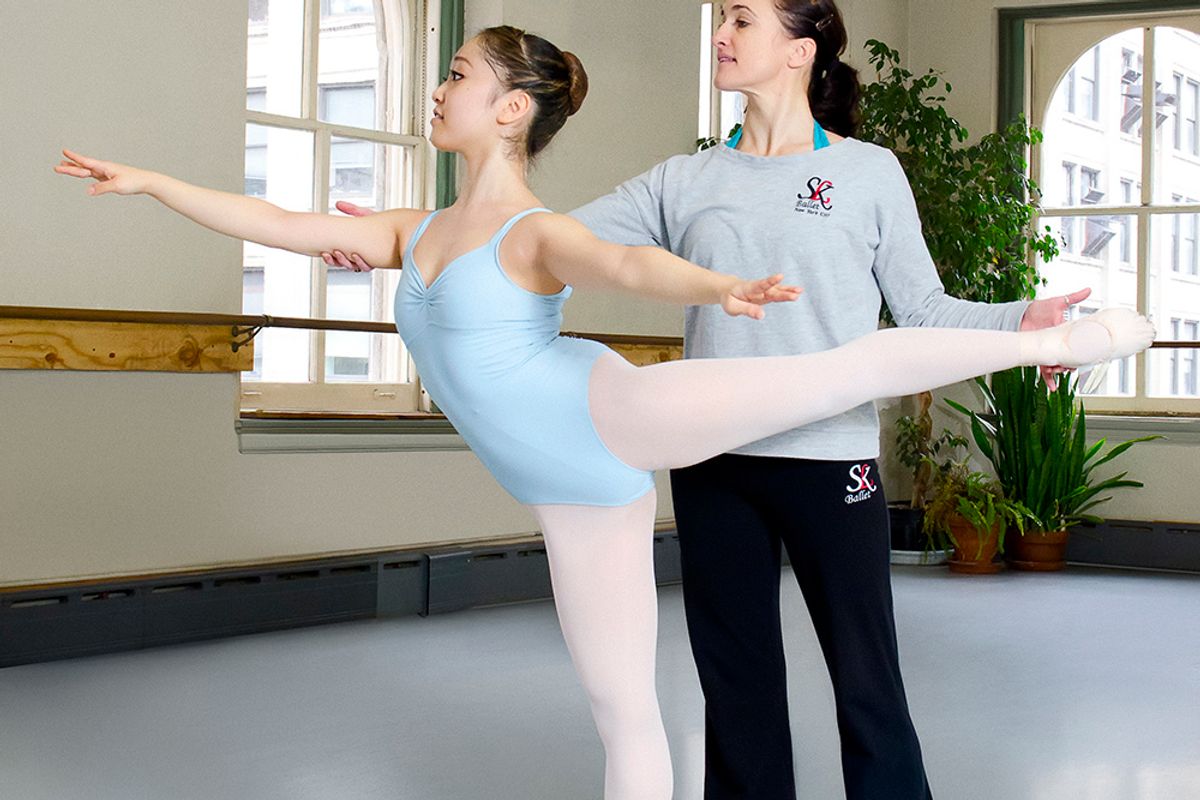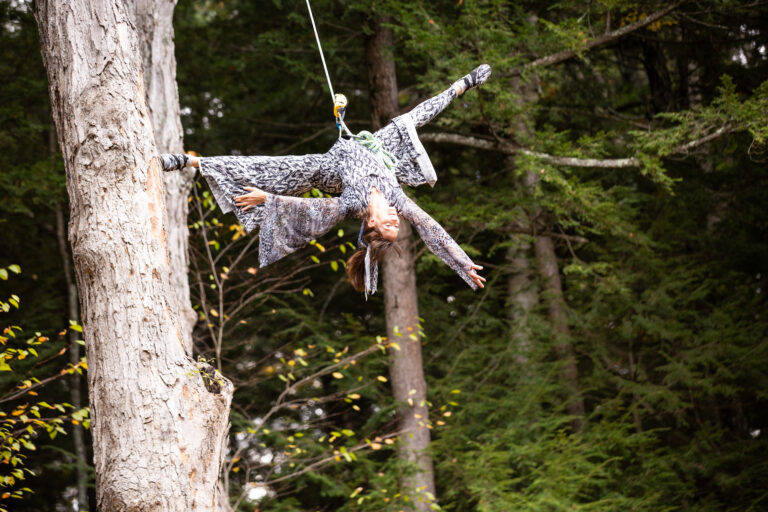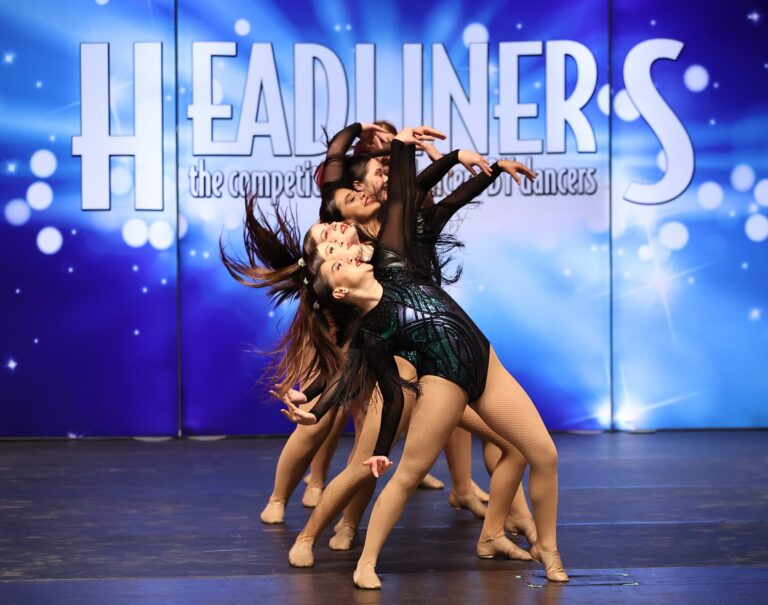
“Take the right foot to coupé; now rise,” says Sara Knight, in her heavy British accent. As her students struggle to keep their torsos from twisting as they relevé, she laughs good-naturedly, knowing the difficulty of her request. “Ah, it’s looking a bit windy in here!” she says.
Peek into her classroom—located at the Battery Dance Company studios in downtown New York, five stories above the Canal Street din—on any given afternoon, and you are likely to find her students levitating. Knight raises their chins, lifts their quadriceps and pulls them up by their waists, sometimes so skyward that the dancers’ feet begin to slip from their pointe shoes. But though her hands-on approach could be called gravity-defying, she’s quick to bring her students back to planet Earth when she senses a stilted pose or affectation.
“Turn your head and just talk to me,” she asks of a student with a stiff head tilt that strains her épaulement. “It’s a normal occurrence to turn the head. As much of ballet that’s not normal, using the head is.” The conversation relaxes the student, and as the tension drains out of her neck, she is able to complete her line more gracefully. It’s this balance Knight finds between the practical and astral demands of ballet that marks her teaching style, as she prepares her students for the professional world ahead.
Though she never set out to start a ballet school, Knight has found that her training—Russian-based, but spiced with French, English and Danish styles—fills a pre-professional niche, even in the crowded New York City market. Now in its sixth year, the SLK Ballet School enrolls a small group of teenage girls from 1 to 6 pm every weekday. Once a year, the students have an opportunity to take a ballet exam (based on the Vaganova Ballet Academy’s exams), attended by a professional panel. “It gives me a chance to sit back and assess where the students are in their training,” she says, which is a common process in most full-time European ballet schools. “There is a sense of nervousness just like in auditions or performances, so the exam helps the dancer practice how they have to push past their fears.” Knight and her panel employ a mark system of one through five, five being the best. Knight schedules meetings with each student afterward to discuss their marks.
The preparation for such a test is grueling. Knight is detail-oriented, worrying as much about the musicality of a waltz as the placement of the little toe or perfectly square hips. Almost every combination at the barre is repeated on relevé. During a difficult adagio, she is relentless in her pursuit of the perfect attitude promenade, reminding her students it will affect their grandes pirouettes later. “Don’t give up, don’t pull back,” she calls from the ground, where she is crouched near a student’s supporting leg, sculpting her dancers’ bodies with her physical adjustments. “You’ve got to educate your inside thigh, and move just your heel. That’s it; you’ve got the stuff. Now put it together!” DT
Atlanta-based writer Candice Thompson danced with the Milwaukee Ballet Company and is a writing fellow at Columbia University.
Sara Knight graduated from both The Royal Ballet School and the Vaganova Ballet Academy (as its first British graduate). She also completed The Royal Ballet School Teacher Training Course, where she worked under the tutelage of master teacher Valerie Adams. Knight danced professionally with the Russian Ballet and Choreographic Miniatures. She co-founded the Greenwich Ballet Academy in Westchester County, New York, and was ballet mistress for Central School of Ballet in London and NYC’s Ellison Ballet before founding SLK Ballet School in 2009.
Erina Tanaka, 18, has been a student at SLK Ballet for three years.
Photography by Kyle Froman



